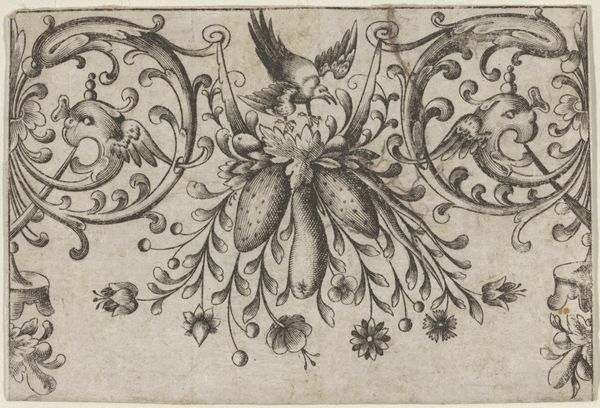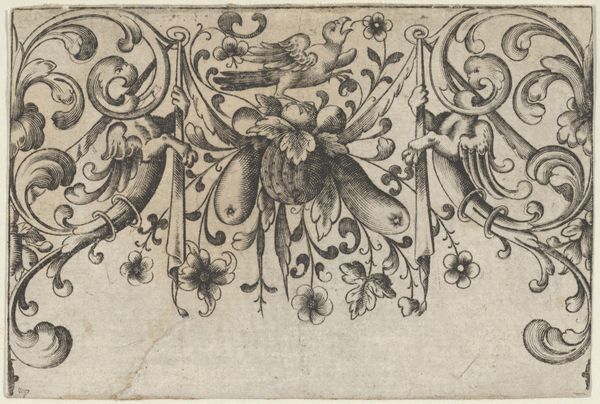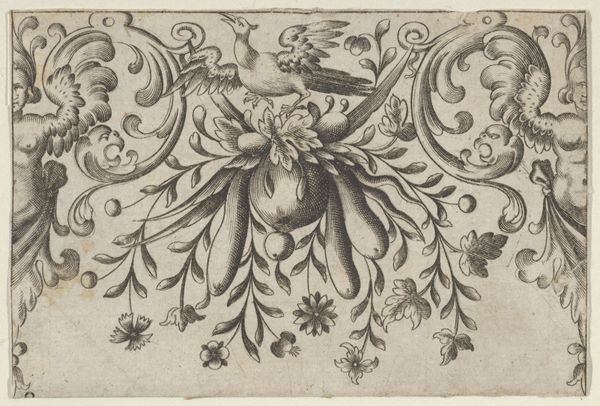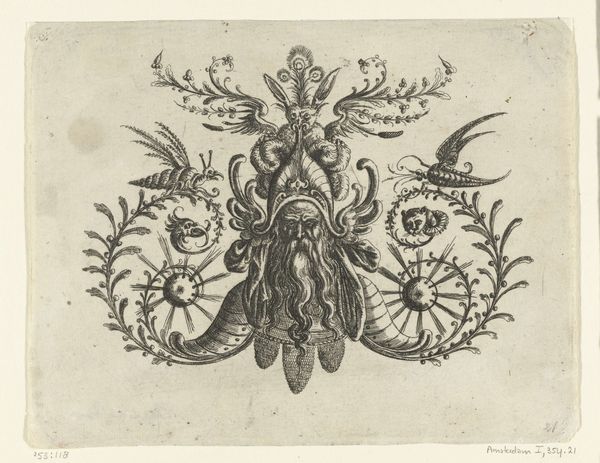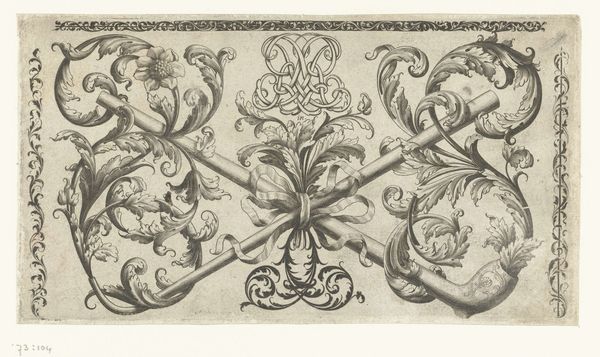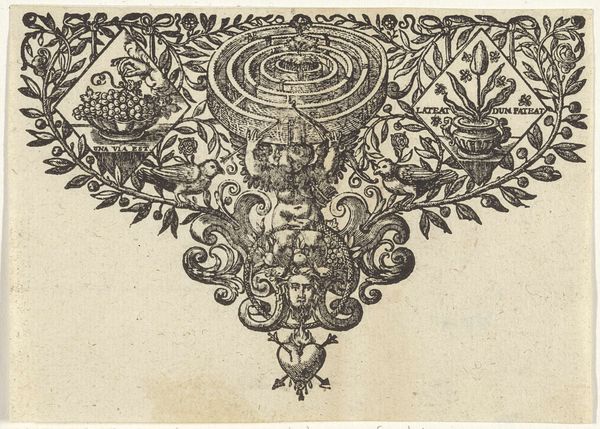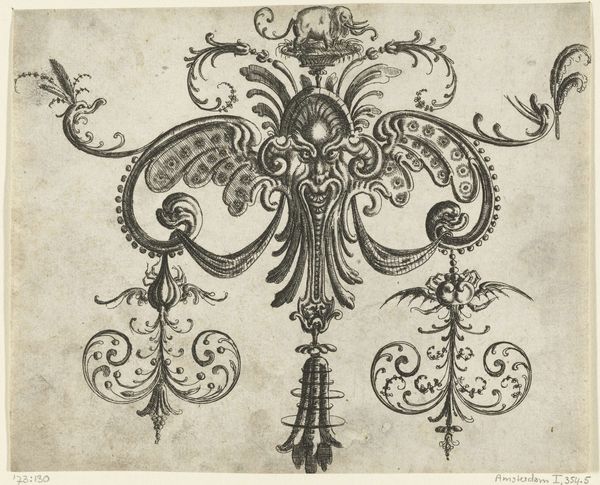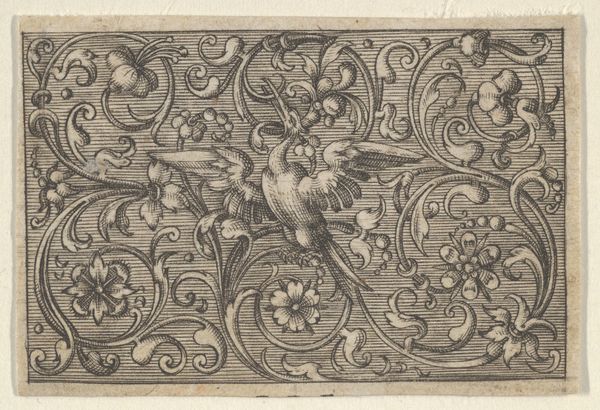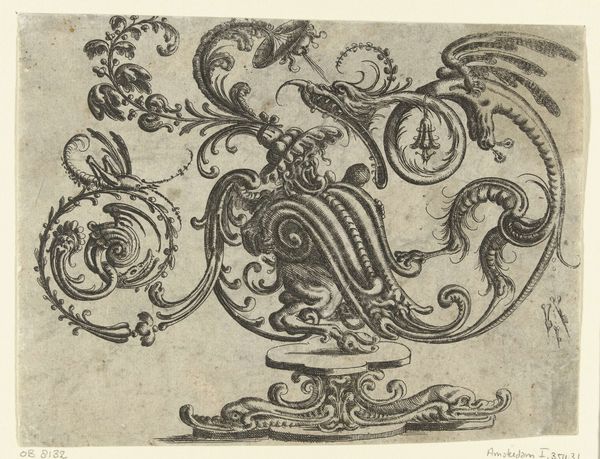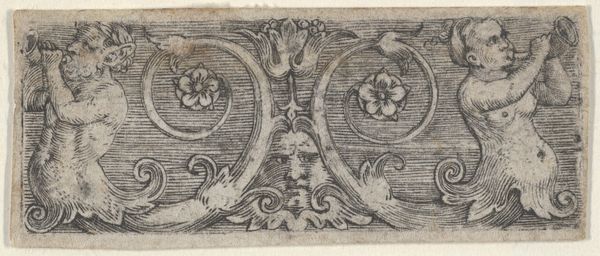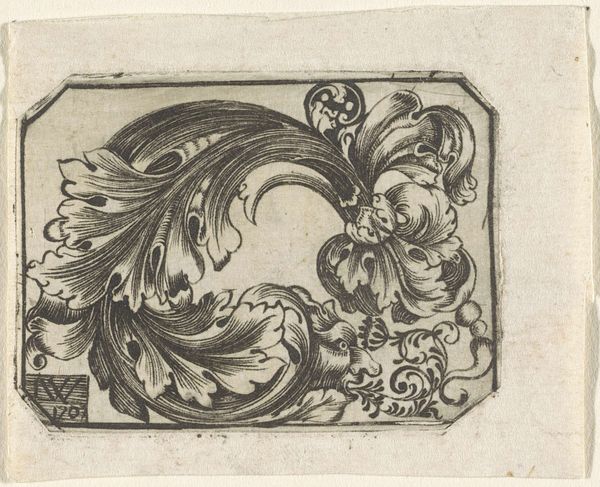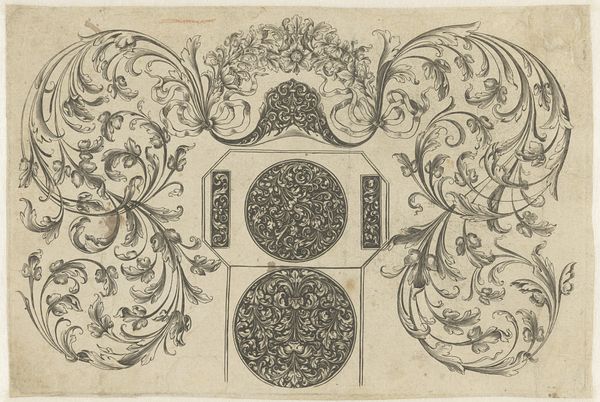
Design for Silverwork with Garlands, Birds, and Grotesque Motifs 1568 - 1633
0:00
0:00
drawing, ornament, print, engraving
#
drawing
#
ornament
# print
#
bird
#
figuration
#
11_renaissance
#
geometric
#
line
#
engraving
Dimensions: Sheet: 2 13/16 × 4 3/8 in. (7.1 × 11.1 cm)
Copyright: Public Domain
Curator: What a fascinating find from the Met’s collection. This engraving, "Design for Silverwork with Garlands, Birds, and Grotesque Motifs," comes to us from Hieronymus Bang, active between 1568 and 1633. It offers a glimpse into the ornate aesthetic of the Renaissance. Editor: My eye is immediately drawn to the elaborate details—the intricate garlands and those rather fantastical creatures perched on top. It's all incredibly busy, yet the balance and symmetry is quite pleasing. Curator: Ornament prints such as this circulated widely. Engravings like this, especially in Northern Europe, were critical to workshops creating luxury objects. Goldsmiths and other artisans could adapt and adopt these designs to satisfy growing demands for elaborate household items amongst the merchant classes. Editor: Absolutely. Look at the crispness of the lines, the density of the hatching. Each curl of the garland is rendered with precision, contributing to an almost dizzying level of detail. I can only imagine the skill it took to execute such a design onto metal. Curator: Consider the cultural context, too. Renaissance art often reveled in ornamentation, showcasing both skill and wealth. It reflects a society where visual splendor and the display of intricate craftsmanship were valued forms of social capital. Printmaking, as an inexpensive medium, allowed for those values to permeate throughout many levels of society. Editor: I agree, it's almost as though every available surface has to be decorated! Those stylized birds seem ready to take flight amidst the dense foliage, creating a dynamic sense of movement within a very controlled structure. And the monstrous figures add an unexpected touch of the bizarre to an otherwise classically-inspired design. Curator: The grotesque elements tie into the Renaissance fascination with classical antiquity. Grotesques, rediscovered in ancient Roman ruins, were seen as imaginative and inventive, far from the modern understanding of “grotesque” as repulsive. They added a touch of wit and sophistication. Editor: The overall effect is certainly captivating. It’s incredible to think of this existing solely as a design. Now, appreciating this piece, I understand both its intrinsic artistry and its broader function in society. Curator: And with that, it becomes clearer how such prints influenced the material culture of their time.
Comments
No comments
Be the first to comment and join the conversation on the ultimate creative platform.
